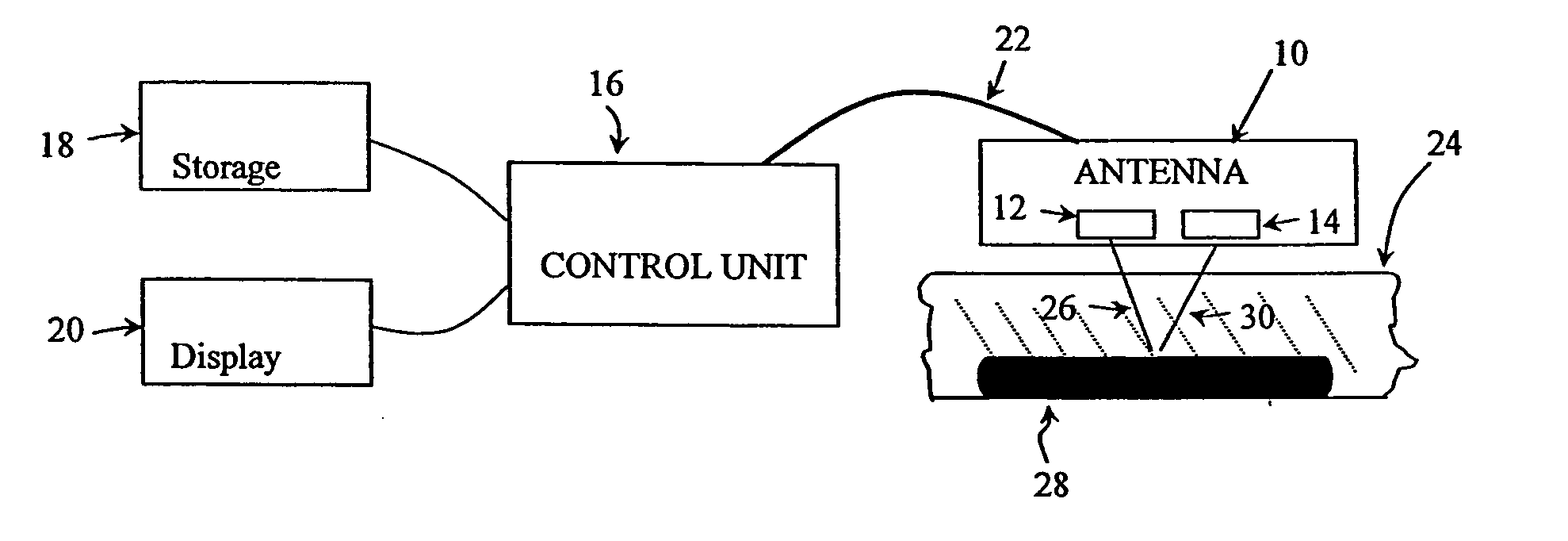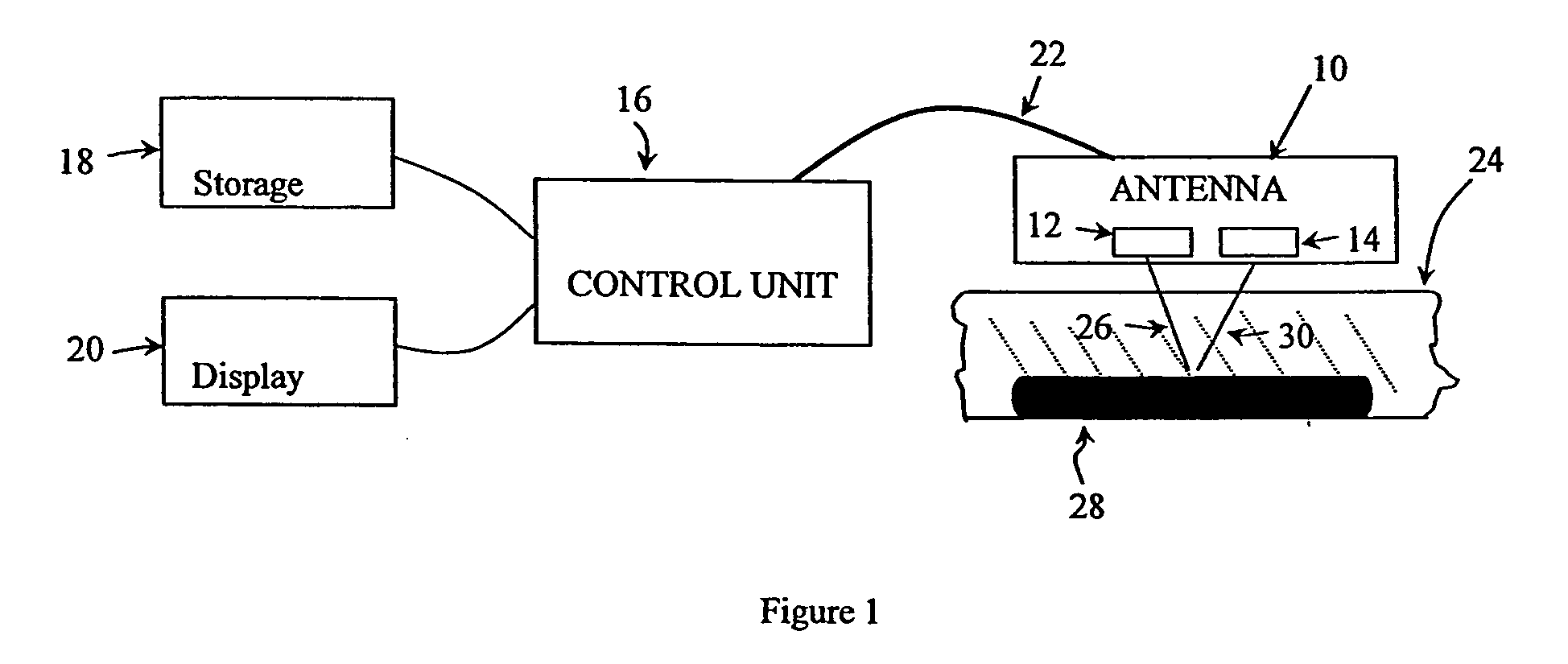System and methods for obtaining ground conductivity information using GPR data
a technology of ground conductivity and gpr data, applied in the direction of resistance/reactance/impedence, instruments, measurement devices, etc., can solve the problems of poor vertical resolution, time-consuming and operator-prone procedures, and poor gpr data in others
- Summary
- Abstract
- Description
- Claims
- Application Information
AI Technical Summary
Benefits of technology
Problems solved by technology
Method used
Image
Examples
Embodiment Construction
[0030] This invention is not limited in its application to the details of construction and the arrangement of components set forth in the following description or illustrated in the drawings. The invention is capable of other embodiments and of being practiced or of being carried out in various ways. Also, the phraseology and terminology used herein is for the purpose of description and should not be regarded as limiting. In particular, the use of “including,”“comprising,” or “having,”“containing”, “involving”, and variations thereof herein, is meant to encompass the items listed thereafter and equivalents thereof as well as additional items.
[0031] Referring to FIG. 1, there is illustrated one embodiment of a typical ground penetrating radar (GPR) system. The illustrated system comprises a transducer 10 including a transmitting antenna 12 and a receiving antenna 14. The transducer 10 is coupled to a control unit 16 which may send control signals, including a transmitter trigger pul...
PUM
 Login to View More
Login to View More Abstract
Description
Claims
Application Information
 Login to View More
Login to View More - R&D
- Intellectual Property
- Life Sciences
- Materials
- Tech Scout
- Unparalleled Data Quality
- Higher Quality Content
- 60% Fewer Hallucinations
Browse by: Latest US Patents, China's latest patents, Technical Efficacy Thesaurus, Application Domain, Technology Topic, Popular Technical Reports.
© 2025 PatSnap. All rights reserved.Legal|Privacy policy|Modern Slavery Act Transparency Statement|Sitemap|About US| Contact US: help@patsnap.com



